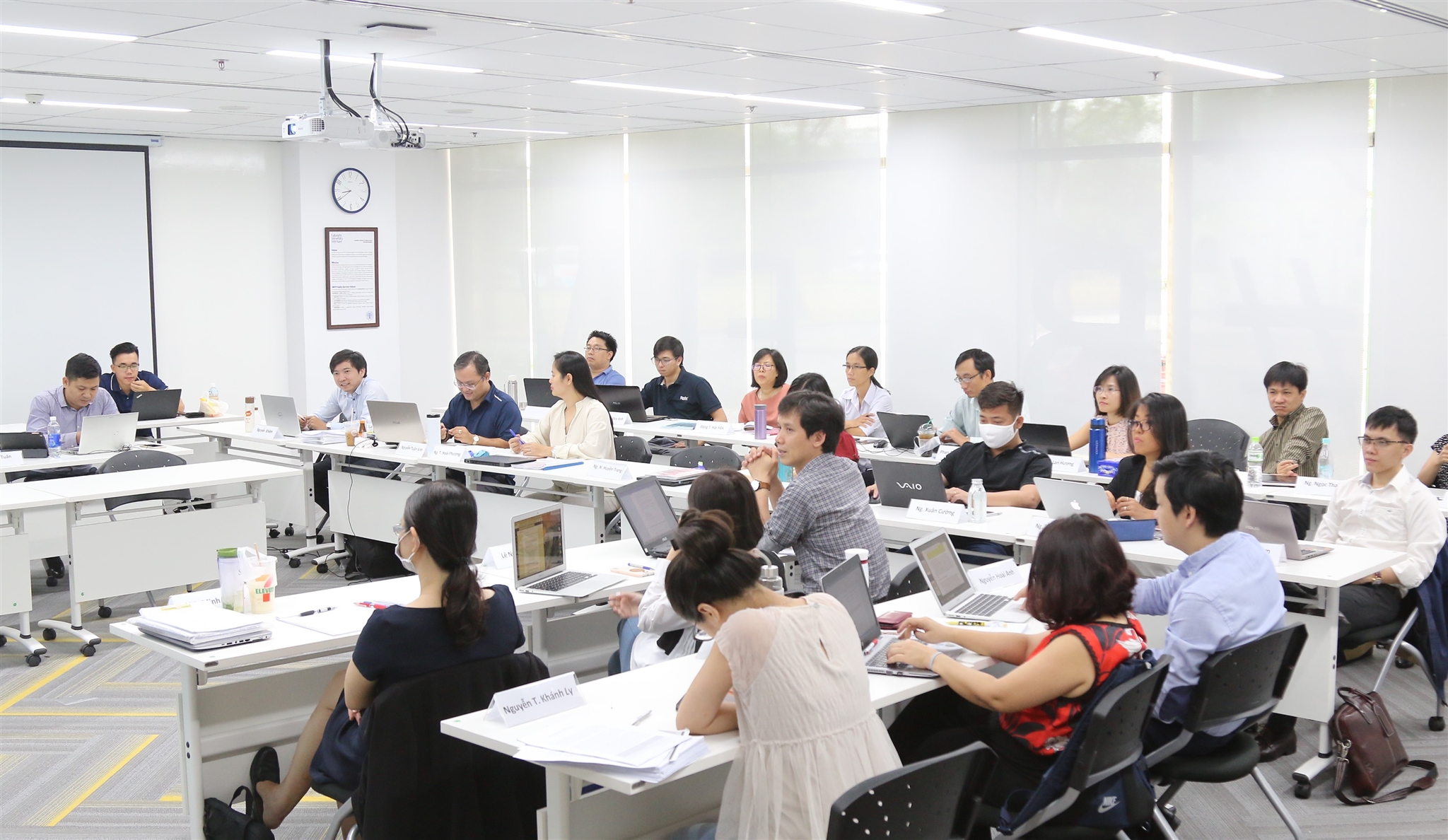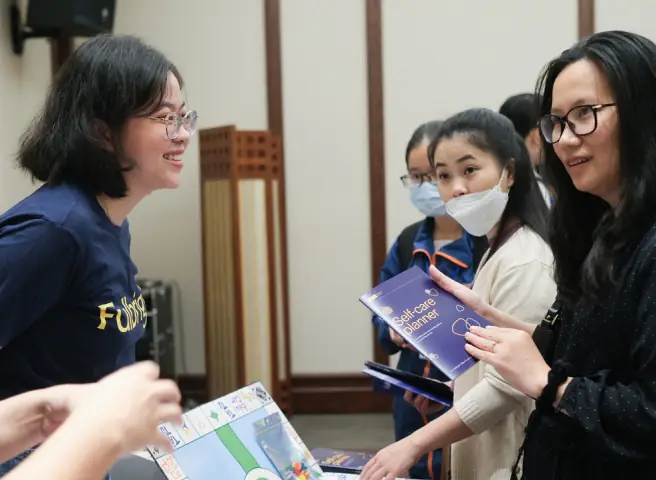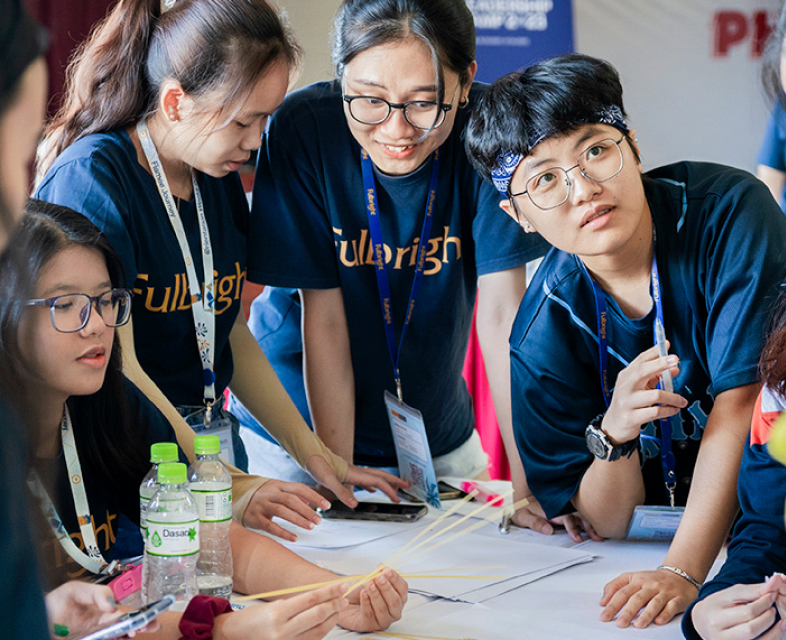
Fulbright School of Public Policy and Management (FSPPM) recently invited Nguyen Dinh Luong, former chief negotiator of the Vietnamese team for the Vietnam-US Bilateral Trade Agreement (BTA) as a visiting lecturer to conduct the Negotiation course.
The agreement, signed in 2000, paved the way for Vietnam’s economy to integrate into the global economy after a long period of US economic sanctions.
In July 1995, Vietnam and the US officially normalized their diplomatic relations, turning from former foes into partners, forgetting the past and opening a new chapter in the history of their bilateral relationship. But the normalization only took real significance when the US and Vietnam drafted the BTA one year later.
Under the draft BTA, the US set clear rules: articles of the agreement would be negotiated based on the principles of the World Trade Organization (WTO). This meant successful negotiations would hold significant meaning for Vietnam, and function as an exercise before Vietnam joined the global playing field of the WTO.
The win-win principle
Former chief negotiator Luong recalled the background of BTA negotiations as unbalanced for both sides.
“Looking back in the past, the Geneva Accords (1954) was negotiated with the advantage for Vietnam, considering the Dien Bien Phu victory. The Paris Peace Accords (1973) was negotiated with advantages for Vietnam in view of victories earned in the battlefield against US troops. We entered BTA negotiations with a single advantage: Vietnam was an independent country. The Vietnamese economy had just got out of sanctions and the Subsidy Period (1976-1986) and entered a phase of transition. Meanwhile, the US had strong leverage in the areas covered by the BTA negotiations, and acted as the rule maker,” he explained.
With negotiations based on WTO regulations, the US sent the first draft agreement consisting of regulations and principles referencing the North American Free Trade Agreement (NAFTA). At that time, Vietnam’s GDP only amounted to 20 billion USD, while the US reached 20 trillion USD. Meanwhile, Vietnam had only kickstarted the process of international economic integration. Many legacies of old economic mechanisms were still in place.
The BTA negotiations aimed to boost the legal framework moderating all economic and trade activities between Vietnam and the US. This legal framework was designed based on WTO regulations and was quite different from Vietnam’s legal system at that time. It gave Vietnam the impetus to play by international rules, and reform its legal system to satisfy US requirements, according to Luong.
Vietnamese negotiators took the underlying stakes of the BTA negotiations seriously. Luong emphasized that negotiations did not aim to seek separate benefits for Vietnam or the US, but to fasten the process for Vietnam to build a transparent, publicized, non-biased legal system before connecting to the global economy. If the agreement failed, Vietnam would hold less chances to join the US-dominated WTO. Both sides needed the BTA, both as a symbol of total normalization of bilateral relations and with an aim to build a long-term partnership. When Vietnam returned the draft agreement to the US with amendments and proposals, American negotiators seemed to be surprised.
“The agreement was actually a search for new avenues, for regulations that would connect the Vietnamese economy with the US economy in the common playing field of WTO, thus connecting the Vietnamese economy with the global economy. Accordingly, Vietnam proposed suitable timelines for necessary tasks, and pledged to implement feasible tasks. In the end, the US agreed with Vietnam’s commitments. Although the two sides had different viewpoints at first, we agreed on the final targets and reached an agreement,” he said.
Looking ahead
The Vietnamese chief negotiator claimed the biggest takeaway for the Vietnamese team was to the importance of being honest and straightforward. Vietnamese negotiators also came well-prepared with knowledge about the global economy and the professional aspects of the agreement. During the process, the Vietnamese team encountered some difficulties because it was the first time they had come across such a huge volume of international legal regulations moderating international trade practices, most of which were not in effect in Vietnam. Vietnam had yet to build an exhaustive regulatory framework that would cover the areas mentioned in the agreement, or had regulations in place that were not compatible with international rules.
Luong recalled Vietnamese negotiators discussed thousands of technical terms they heard of for the first time, most of which were not available in Vietnamese dictionaries.
“I remember the documents for BTA negotiations weighed a total of 48 kilograms. The pressure was on because we knew some short terms could make huge impacts on the whole Vietnamese legal system, forcing Vietnam to induce extensive, transformative changes to its legal framework to match with international rules,” he said.
After four years of negotiations, Vietnam and the US officially signed the BTA on July 14, 2000.
Luong said the Vietnamese team was aware that having a deep understanding of their partners was of the utmost importance. Therefore, they prepared solutions for negotiations thoroughly and confidently.
“Vietnam-US relations had just been normalized, so it’s understandable that they could not establish trust and mutual understanding immediately. The two sides knew they had to establish confidence in their partner and the confidence would be growing gradually during the negotiation process. In order to establish confidence, the two sides had to figure out their common vision. They had to strive to find win-win solutions. Both sides had to forget about past conflicts and agree on a shared vision,” he explained.
After the lecture ended, FSPPM students and professors discussed techniques and principles of negotiations used by chief negotiator Luong. Dr. Christopher Balding, associate professor at Fulbright, recommended students pay special attention, as those principles would help them when risks and difficulties arise through any kind of negotiation process.
Xuan Linh







